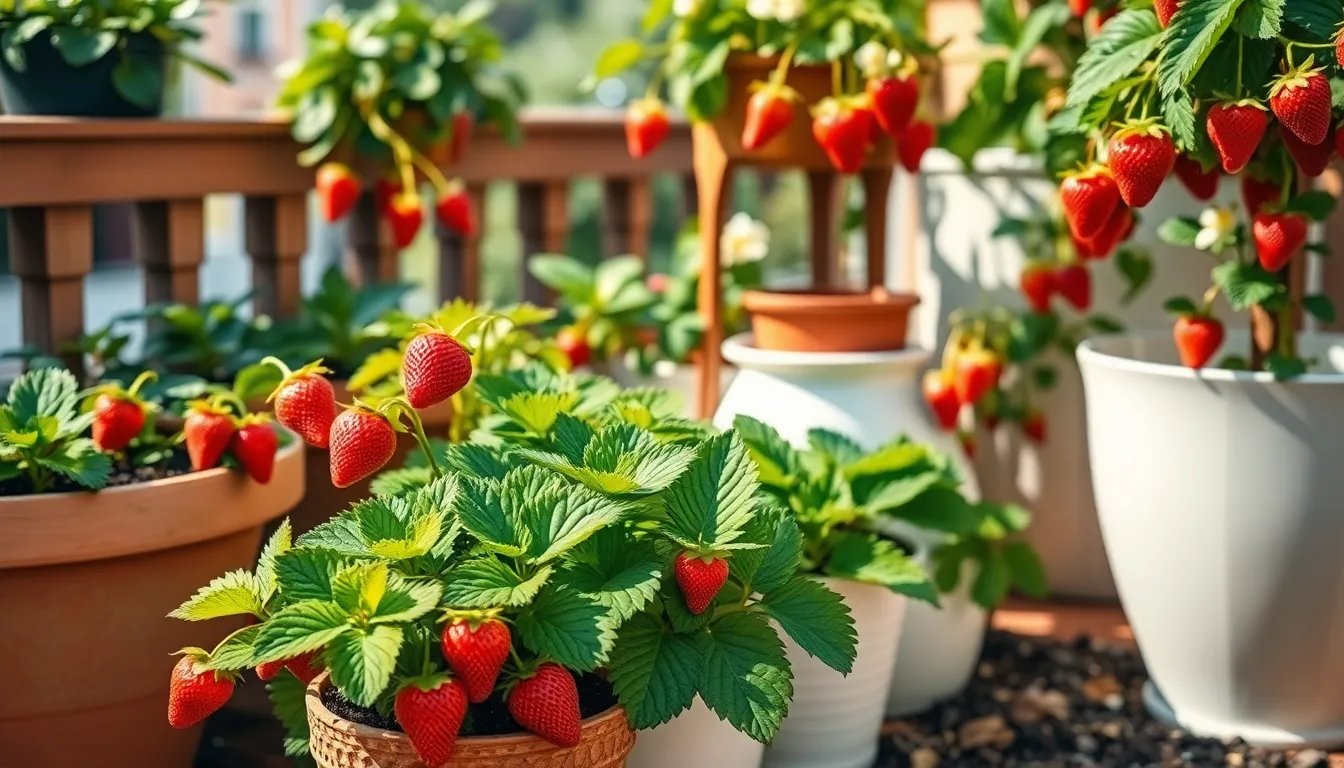Imagine stepping into your own garden and plucking a sun-kissed, juicy strawberry right from the vine—a simple pleasure that more than justifies the effort of growing them at home. Whether you’re a novice or a seasoned gardener, cultivating strawberries in your backyard or balcony can be a rewarding experience that adds a dash of sweetness to your day.
For beginners, growing strawberries is a delightful introduction to home gardening, offering a taste of success with relatively minimal fuss. Experienced gardeners will find that these versatile berries can be a fascinating addition to their existing plant collection, offering year-round interest and a bounty of fruit with the right care.
In this article, you’ll discover the secrets to cultivating strawberries in various settings, from traditional garden beds to innovative container gardening. We’ll guide you through selecting the best varieties, understanding their growth cycles, and mastering the nuances of care and maintenance. As you dive into the world of strawberry gardening, prepare to unlock the joy and satisfaction of growing your own delicious harvest at home.
Choosing Strawberry Varieties
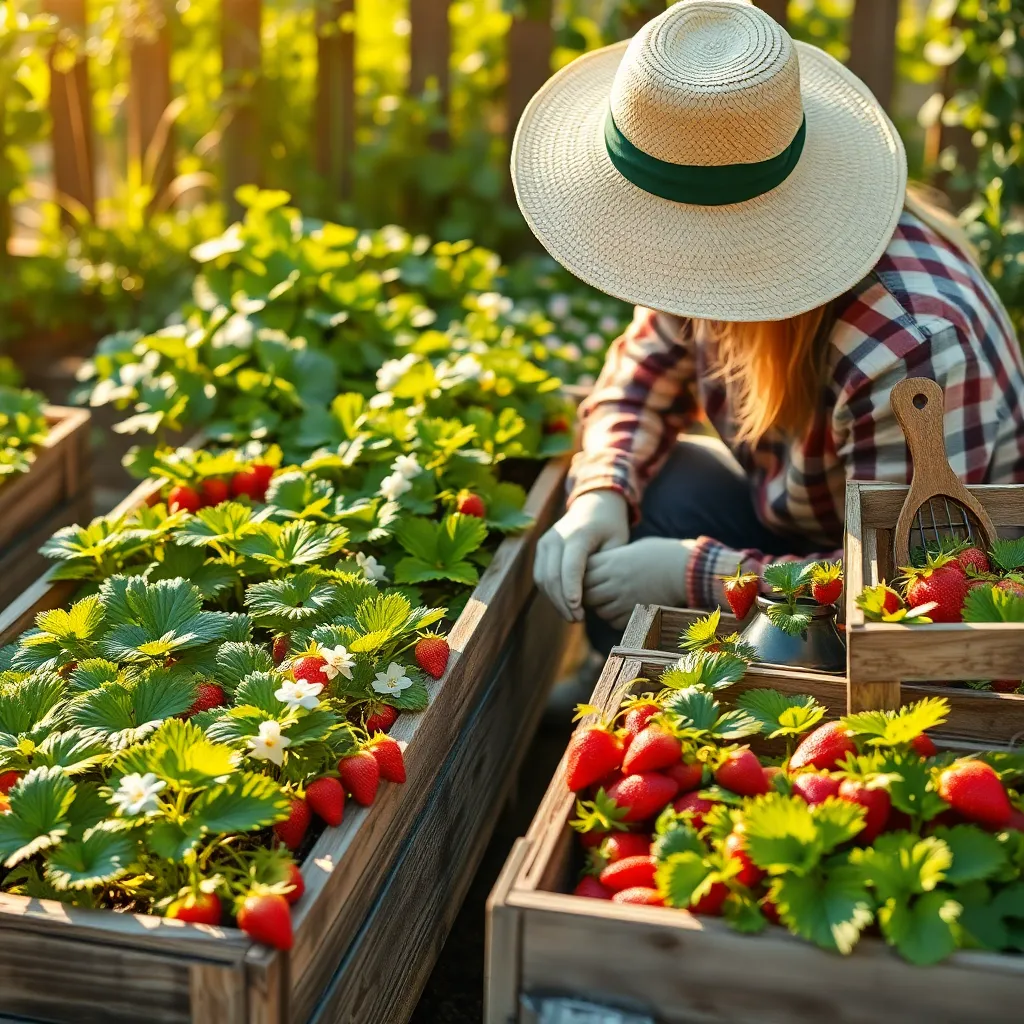
When choosing strawberry varieties for your home garden, consider the three main types: June-bearing, everbearing, and day-neutral. June-bearing strawberries produce a single large crop in late spring or early summer, making them ideal for those who want to harvest a substantial yield at once.
Everbearing strawberries provide two to three harvests per season, typically in spring, summer, and early fall. This variety is perfect for gardeners who prefer a steady supply of strawberries over a longer period.
Day-neutral varieties produce fruit continuously as long as the temperature remains between 35°F and 85°F (1.5°C to 29°C). They are a suitable choice for those who want a consistent supply of fresh berries throughout the growing season.
For optimal growth, plant strawberries in well-drained soil with a pH between 5.5 and 6.8. It’s advisable to incorporate organic matter, such as compost, to improve soil fertility and drainage.
Ensure your strawberry plants receive at least six to eight hours of direct sunlight each day. Consistent watering is crucial; aim to keep the soil moist but not waterlogged, especially during the fruiting period.
To maximize your harvest, consider using mulch around your plants to retain moisture, suppress weeds, and keep the fruit clean. Regularly remove any runners (long stems) to focus the plant’s energy on producing larger berries.
Preparing Your Planting Site
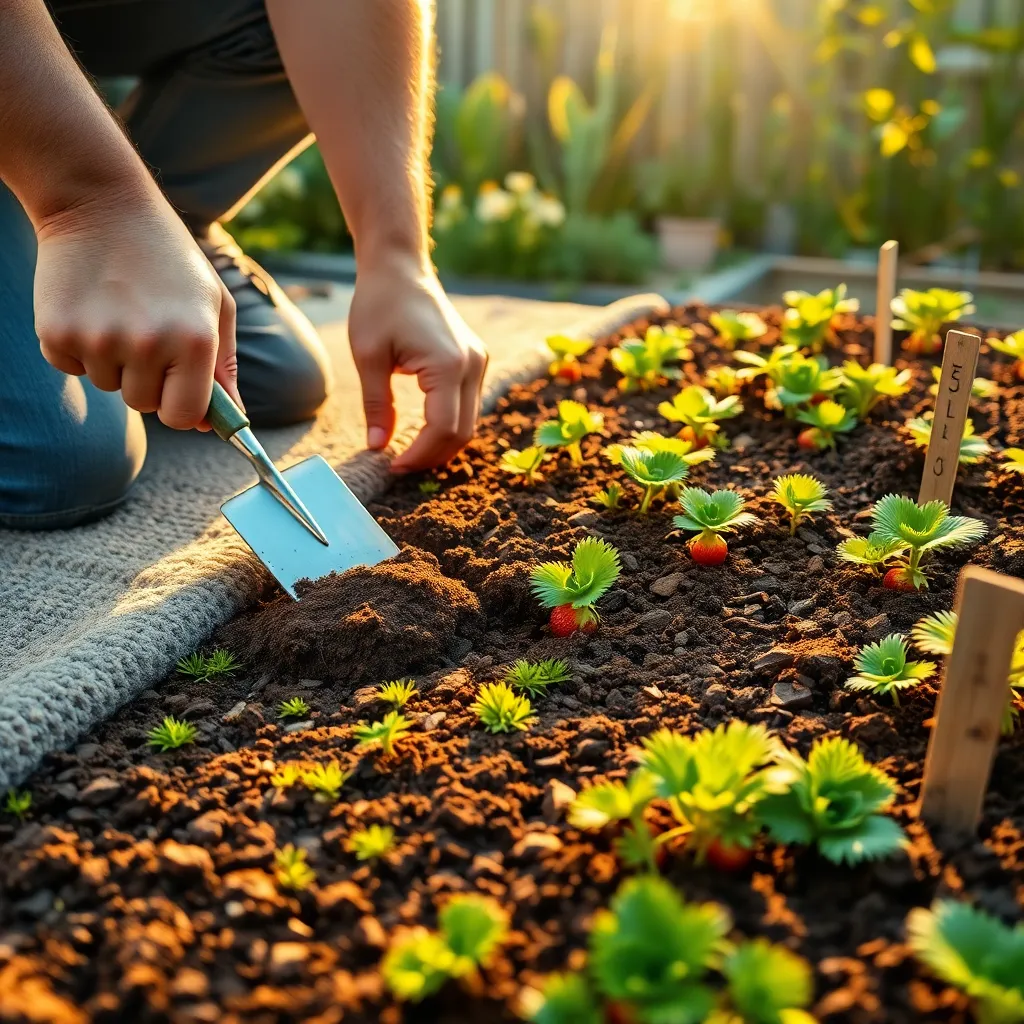
Before planting strawberries, it’s crucial to select a site that receives at least six to eight hours of sunlight daily. Strawberries thrive in well-drained soil, so consider raised beds if your garden soil tends to be heavy or clay-like.
Preparing the soil is the next vital step; incorporate plenty of organic matter such as compost or well-rotted manure to enrich the soil. Test the soil pH and aim for a slightly acidic level between 5.5 and 6.8, which is optimal for strawberry growth.
Clear the planting site of weeds and debris to prevent competition for nutrients. Additionally, ensure proper spacing by planting strawberries about 18 inches apart to allow for sufficient air circulation and to prevent disease.
Mulching is highly beneficial to maintain soil moisture and temperature. Use straw or pine needles as mulch, applying a layer about two to three inches thick around the plants, which also helps to suppress weeds.
Planting Strawberries Step-by-Step
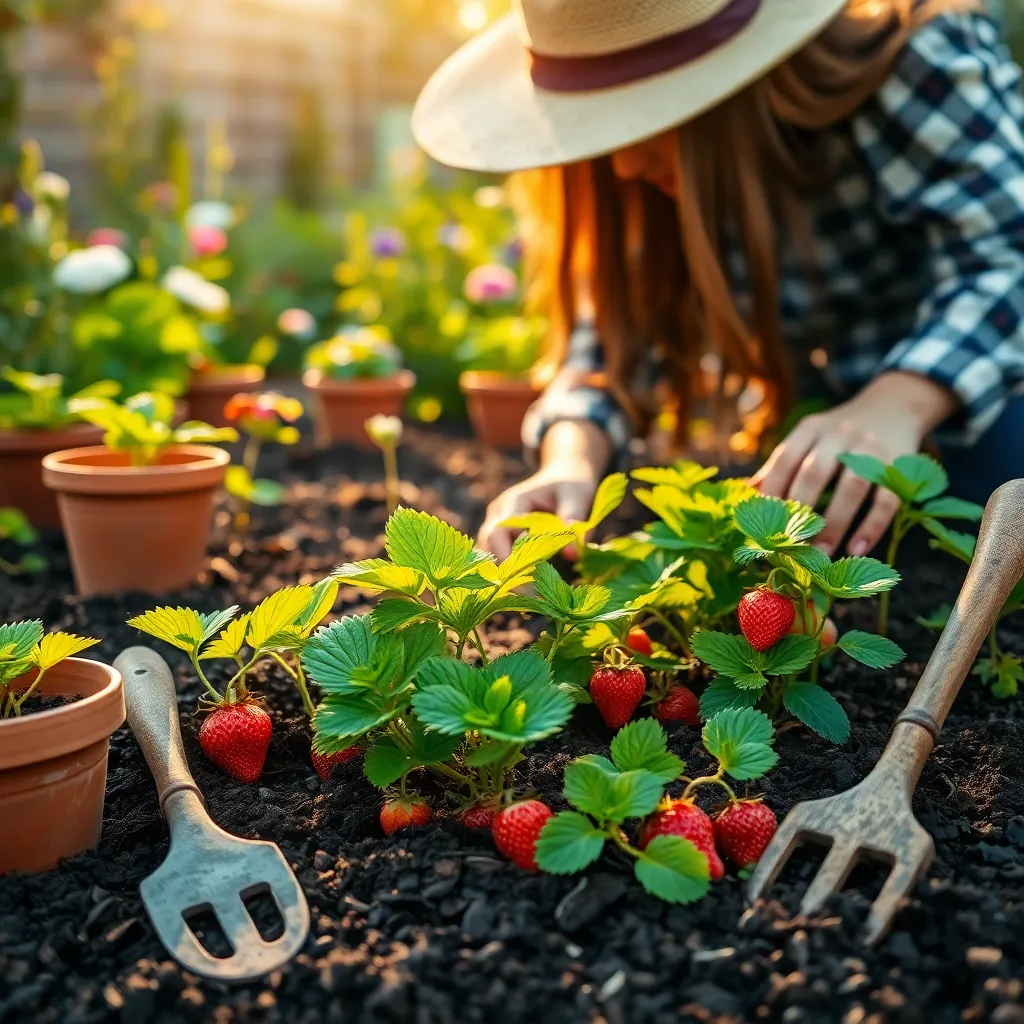
Once your planting site is ready, it’s time to select the right strawberry variety. Choose between June-bearing, everbearing, or day-neutral strawberries, each offering different harvest times and yields.
Begin by preparing the soil with organic matter like compost to enhance its fertility. Strawberries thrive in well-drained, sandy loam soil with a pH between 5.5 and 7.0.
Next, plant your strawberries in early spring when the soil is workable and has warmed up a bit. Space plants about 12 to 18 inches apart in rows that are 3 to 4 feet apart to allow for adequate air circulation and sunlight penetration.
Water your strawberry plants immediately after planting to help them settle in their new environment. Maintain consistent moisture by watering deeply once or twice a week, especially during dry spells.
For a bountiful harvest, mulch around the plants with straw or pine needles to conserve moisture and suppress weeds. Mulching also helps protect the developing berries from touching the soil and reduces the risk of rot.
Monitor your strawberry plants for pests and diseases, using organic methods like neem oil or insecticidal soap when necessary. Regularly inspect the leaves and fruit, removing any that show signs of damage or disease to keep the plants healthy.
Caring for Your Strawberry Plants
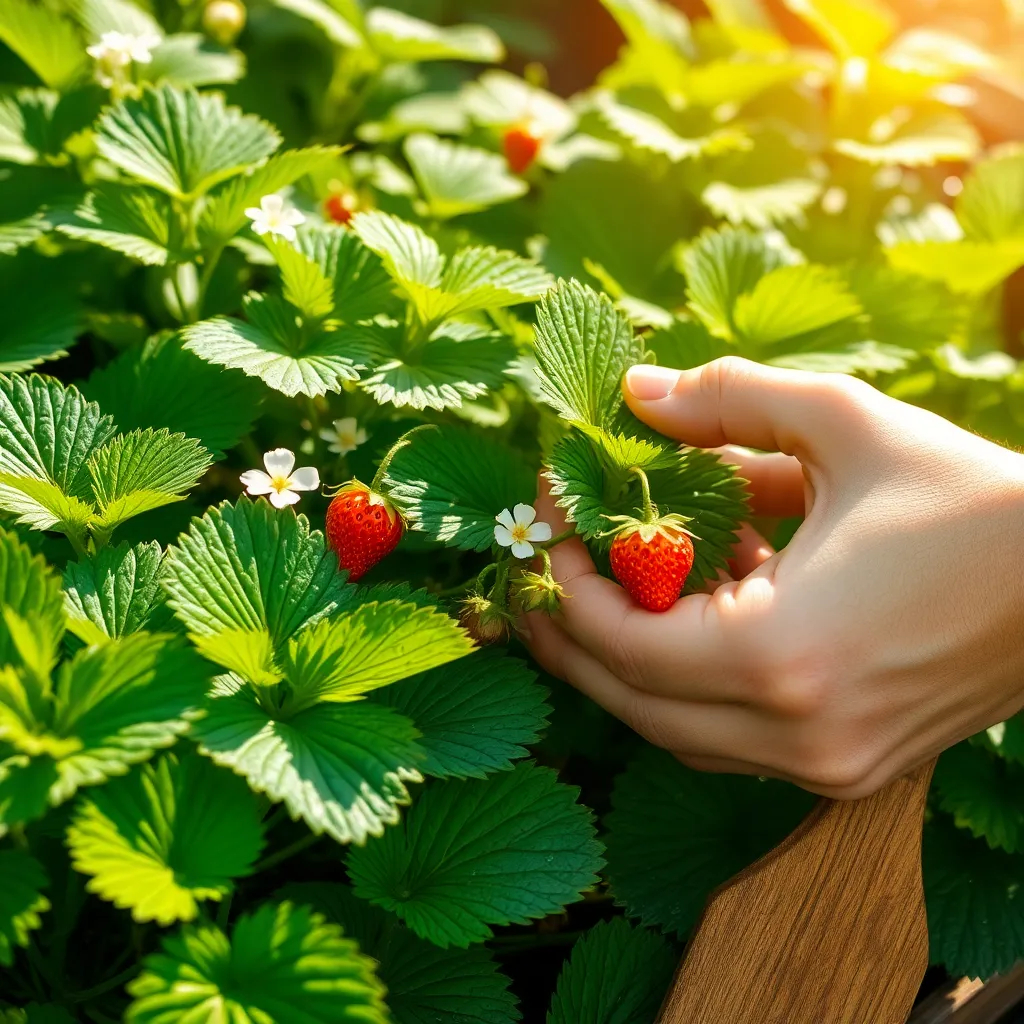
Once your strawberries are planted, it’s crucial to focus on proper care to ensure they thrive. Strawberries prefer well-drained, slightly acidic soil with a pH between 5.5 and 6.8, so consider testing your soil and amending it if necessary.
Watering is key to healthy strawberry plants, especially during dry spells. Water your strawberries about 1 to 2 inches per week, ensuring the soil remains moist but not waterlogged to prevent root rot.
Fertilization helps maintain vigorous growth and abundant fruit production. Use a balanced fertilizer in early spring, and again after the first fruiting to support continuous growth and fruiting.
Keeping your strawberry patch weed-free is essential as weeds compete for nutrients and water. Mulching with straw or pine needles not only suppresses weeds but also helps retain moisture and maintain soil temperature.
Regular maintenance includes removing runners if you want to focus on fruit production. However, if you aim for a larger patch, allow some runners to root and expand your strawberry bed. Pruning dead leaves and spent flowers encourages new growth and reduces the risk of disease.
Advanced gardeners might consider rotating their strawberry crops every few years to prevent soil-borne diseases. By moving plants to a new location or using raised beds, you can maintain healthy plants and continue enjoying bountiful harvests. Implement crop rotation by following strawberries with a different type of plant to disrupt pest and disease cycles.
Harvesting and Enjoying Your Bounty
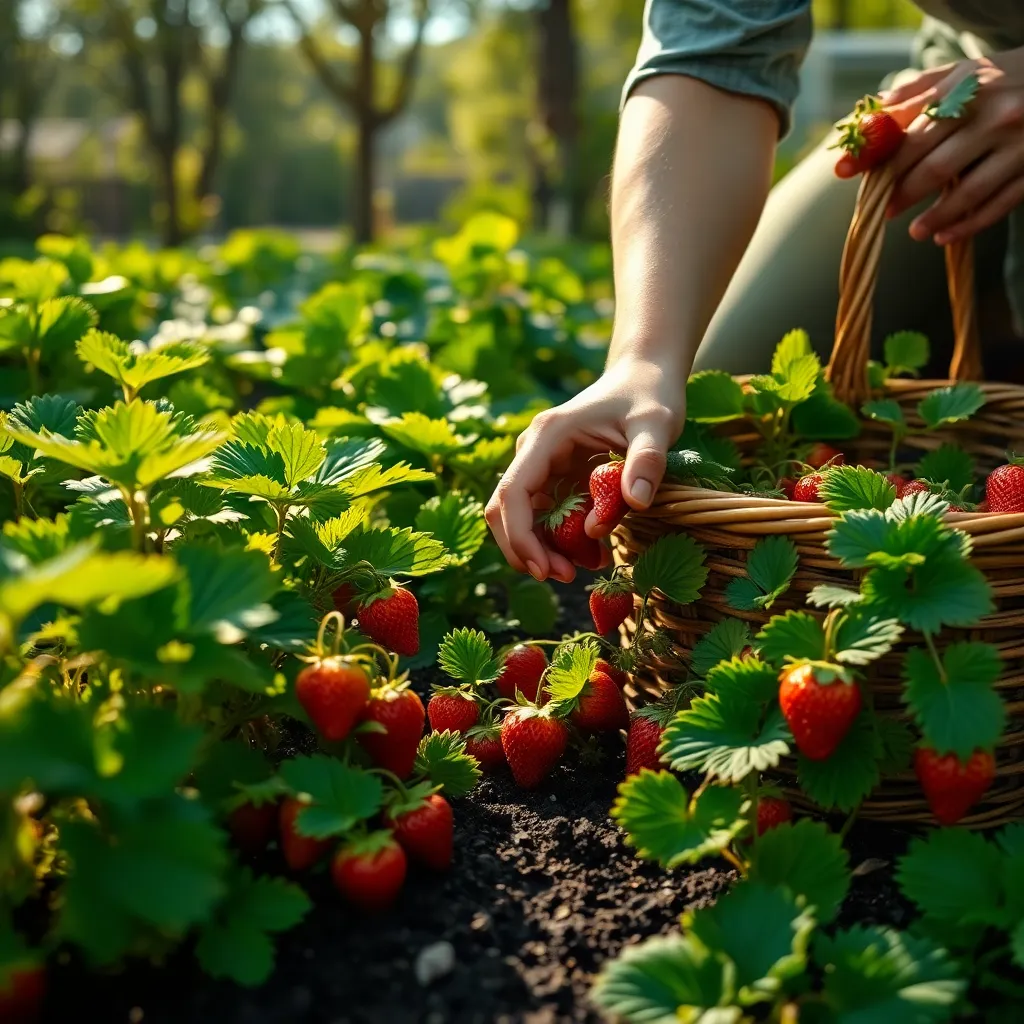
When your strawberry plants are laden with ripe berries, it’s time to harvest your delicious bounty. Pick strawberries in the morning when they are cool, as this helps preserve their flavor and freshness.
Gently grasp the berry and twist it off the stem without pulling to avoid damaging the plant. Check your plants every few days during the peak season to ensure you don’t miss any ripe fruits.
For the best taste, allow strawberries to fully ripen on the plant before picking them. Ripe strawberries will have a deep red color and a sweet aroma, indicating they’re ready to enjoy.
Once harvested, strawberries should be stored in the refrigerator and consumed within a few days for optimal freshness. Rinse them just before eating to prevent mold and spoilage.
Enjoy your strawberries fresh, or try incorporating them into desserts, salads, or smoothies for a delightful treat. For long-term enjoyment, consider freezing some berries for use in recipes throughout the year.
Conclusion: Growing Success with These Plants
In exploring the vibrant world of home-grown strawberries, we’ve uncovered five key relationship concepts that parallel nurturing your own patch of delicious fruit. First, understanding the importance of a solid foundation reminds us that just like selecting the right soil, relationships thrive when built on mutual respect and trust. Second, planting seeds of communication fosters growth and ensures your bonds flourish. Third, regular maintenance — akin to weeding your garden — is crucial to address conflicts before they overshadow your connection. Fourth, patience and persistence are vital, as both plants and partnerships require time to reach their full potential. Lastly, celebrating the fruits of your labor enhances the joy and satisfaction in your relationship journey.
To take immediate action, consider setting aside time this week to discuss with your partner how you can cultivate these concepts in your relationship. Bookmark this article as a handy guide in your journey toward a more fulfilling partnership. As you nurture your relationship with these insights, envision a future where your bond grows stronger and more resilient, much like a flourishing strawberry patch. With dedication and care, the seeds you plant today will yield a harvest of happiness and connection tomorrow.

